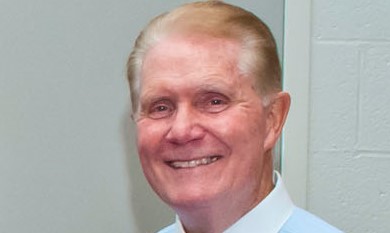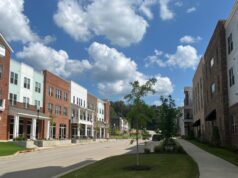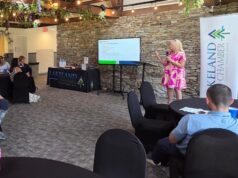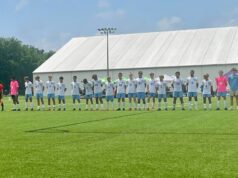By Carl Helton, LC staff
Continuing with our 40th Anniversary Celebration we are revisiting previous history stories from past LC editions. This week we pull out a story from the August 2014 edition of Lakeland Currents written by former Lakeland Commissioner Cecil Tompkins.
Note:
The LAMP summer concert series will recognize Lakeland’s birthday at the Aug. 26 concert at IH Park. Featured bands will be Ted Horrell and the Monday Night Card (Dr. Horrell is the Lakeland school superintendent) and the Nick Black Band. Food Trucks will be Caliente, Memphis Mojo Café and Beakers Sno Cones. The concert runs from 7 to 10 p.m.
I have a question for you, readers: What do the 1958 Brussels World Fair, a sandy beach and a race car have in common? For those of you who have lived in Lakeland from the beginning, you know the answer.
The surprising answer is that those three items are part of your heritage as citizens of Lakeland. That came about as the result of Lakeland Amusement Park, formed in 1959 and ultimately became the site of a new city.
The cable cars, imported from the Brussels World Fair, stretched across an area four times longer than the original cable cars in operation at Disneyland. The sandy beaches were on what is now East Shores and the race cars were in operation at the Lakeland Drag Strip located behind the current outlet mall. You would be hard pressed to find a more unusual beginning of a city.
What may be just as interesting to some is that Lakeland was almost part of Arlington. In late 1976 the Board of Aldermen in Arlington proposed to annex the area that is now Lakeland. The annexation issue had already passed on two readings. On the night of the third reading a delegation consisting of Louis Garner, the owner of Lakeland Amusement Park, Dale Jones and Bob Murphy attended the Arlington Board meeting. They pled with the Board not to annex Lakeland, but give the residents of the community a chance to form their own city. Surprisingly, the aldermen agreed to forgo the annexation.
So, in June 1977, after some debate, residents voted to become Lakeland, a city of 612 citizens. The population consisted of three areas of the newly formed city: the lake area, the mobile home area and the remaining rural areas. A commissioner was elected from each of these sections, and those commissioners elected a mayor and a vice-mayor for the City.
The early boards were presented with some interesting decisions. It was proposed that Lakeland annex a portion of land south of the intersection of Highway 64 and Houston Levee. Today that would be where Bank of Bartlett, CVS Pharmacy and other businesses are located.
Davies Plantation was also in the annexation plans that were proposed before the laws allowing the larger cities to have priority or establish annexation reserves. The Lakeland boards declined to take in those two areas, which were basically vacant land.The City would certainly have a different look today if that had occurred. Thanks to former Commissioner Dale Jones for his help in supplying some fascinating historical moments. Go to You Tube to see some videos of the original Lakeland Amusement Park.

(Mr. Tompkins and his wife Nancy moved to Lakeland in 2005 and became active in the community. He is a former president of the Civic Club, Lakeland Lions Club, former member of the Lakeland Municipal Planning Commission and served a four-year term as Lakeland commissioner where he was selected vice mayor. He helped to found the Lakeland Education Foundation and was its first chair. He was the chair of COLA (Council of Lakeland Associations) which was the umbrella organization for Citywatch, the publication that preceded Lakeland Currents. He is also an accomplished singer.)












